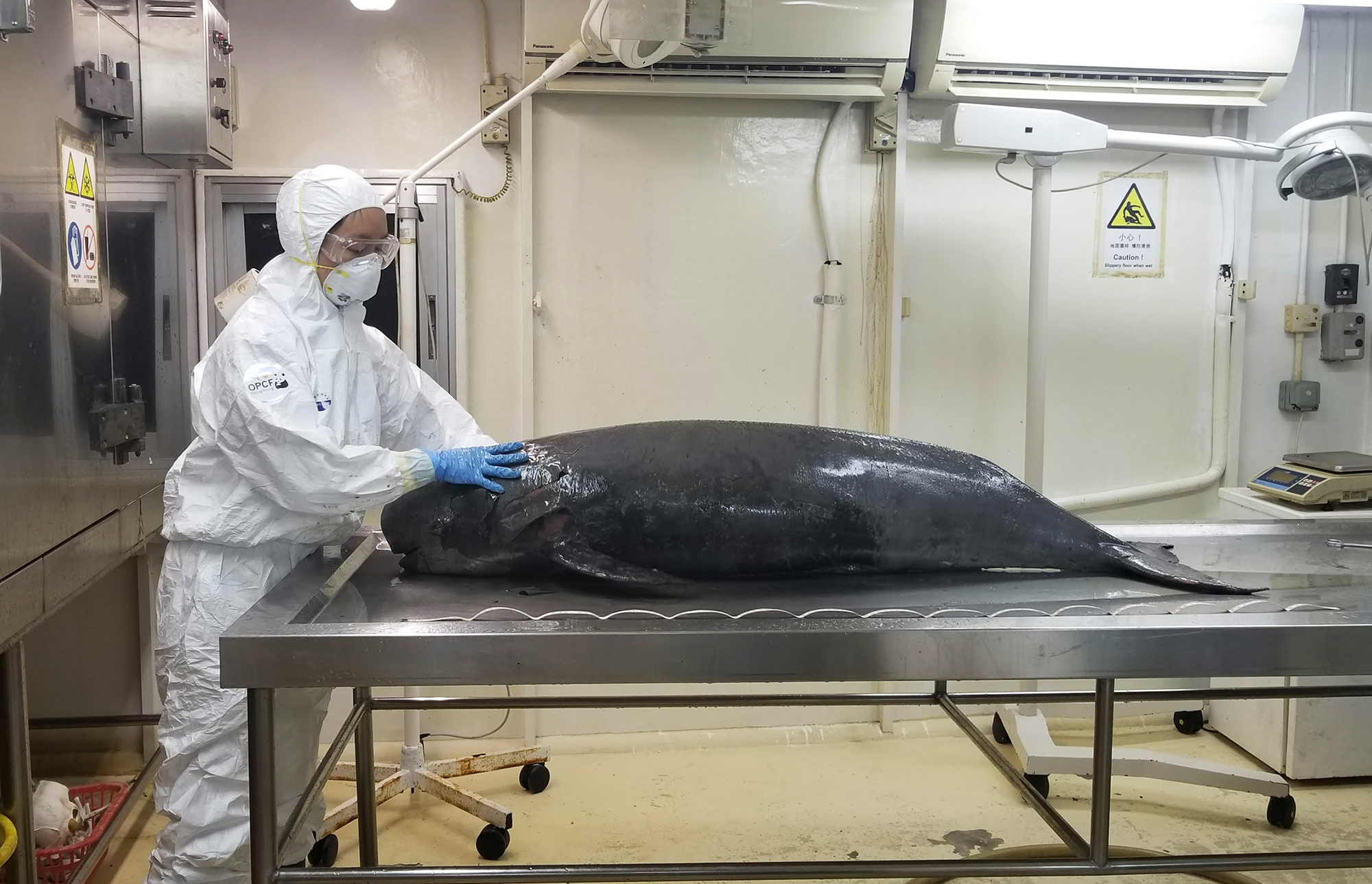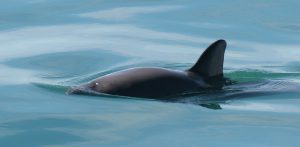Finless porpoises are washing up dead or becoming stranded on Hong Kong’s shorelines in increasing numbers. The reasons behind the rise in mortalities are puzzling conservation groups.
According to a new report, more than 40 of the small cetaceans were reported dead in 2019, making it the worst year for porpoise strandings on record. The annual average of stranded porpoises has increased over time, from 11 animals per year in the late 1990s to 24 per year in the past decade. Since 2006, a total of 318 stranded porpoises have been reported on the Hong Kong coast.
It is unlikely that the population can sustain such high levels of mortality, says Teale Phelps Bondaroff, director of research for Oceans Asia, a non-profit based in Hong Kong.
“The last population survey in 2002 identified 220 porpoises. We’ve had more than that many die since then,” says Phelps Bondaroff, author of the new report. “The fact that we have a high percentage of the population potentially being killed each year is alarming.”
Finless porpoises (Neophocaena phocaenoides) – which inhabit coastal waters from the Persian Gulf to central China – are listed as vulnerable by the IUCN (International Union for Conservation of Nature). The population is believed to be decreasing due to an array of human threats, including vessel strikes, entanglement in fishing gear and pollution.
The reason behind the recent spike in strandings, however, is difficult to pin down. A local charitable trust, OPCFHK (Ocean Park Conservation Foundation Hong Kong), has been investigating porpoise strandings since 2006. Freshly killed animals can show clear signs of trauma when they have been hit by boats or tangled in fishing gear; but many are badly decomposed, or even found without a head.
As a result, “we have only been able to confirm the cause of death in around 10% of cases,” says Loretta Kwok, spokeswoman for OPCFHK.
The level of detail of porpoise post mortems, or “necropsies”, is not always consistent, according to the new report. This is a problem for conservation efforts, because “if we don’t know what’s causing the deaths, then we can’t try to mitigate that threat,” explains Phelps Bondaroff.

A member of the OPCF’s marine mammal stranding team prepares to perform a post mortem on a finless porpoise stranded in Hong Kong (Image © Gary Stokes/OceansAsia)
“We want to encourage OPCFHK to conduct detailed necropsies of every porpoise they find,” says Phelps Bondaroff, “and make the data public to allow better understanding of threats across the region.”
Reported deaths may only tell part of the story. Porpoises are especially at risk of drowning in fishing nets, but the official entanglement tally in Hong Kong’s extensive inshore fisheries is unusually low. The current wording of the Wild Animal Protection Ordinance requires fishers to prove they caught the porpoise by accident – a difficult standard to meet, which may deter them from reporting entanglements.
Amending the law could help incentivise fishers to report accidental porpoise mortalities. Unlike onboard observer programmes, which can be costly and dangerous, fitting boats with CCTV cameras could record entanglements with minimal disruption.
The report also recommends conducting a detailed population survey and creating a protected area around the key porpoise habitat at Lamma Island, Hong Kong’s third-largest island.
Construction projects, vessel strikes, and pollution could be contributing to porpoise mortality, says Phelps Bondaroff, but the lack of data is a big concern.
“We as humans have a really worrisome history of threatening porpoises and small cetaceans,” says Phelps Bondaroff. Mexico’s vanishing vaquita, the Yangtze finless porpoise, the extinct baiji dolphin, and the Indo-Pacific humpback dolphin, which is also found in in Hong Kong waters, are all victims of the same types of threats facing the finless porpoise.
Should mortality continue at unsustainable levels, “the disappearance of the finless porpoise in Hong Kong may upset the local marine ecosystem” by driving changes in nutrient cycling and plankton productivity, says Kwok.
A finless porpoise stranding “is the canary in the coal mine,” adds Putu Liza Mustika, a cetacean scientist at James Cook University in Australia who founded Whale Stranding Indonesia, an online database for reporting stranded whales, dolphins and dugongs. “It should be seen as a sign that there is something wrong with the way we manage our oceans.”









![There could be more muddy rain in the future, scientists say, as climate change makes wind patterns more erratic and unpredictable [Kathmandu image by: Alamy]](https://dialogue.earth/content/uploads/2020/06/Kathmandu-300x200.jpg)